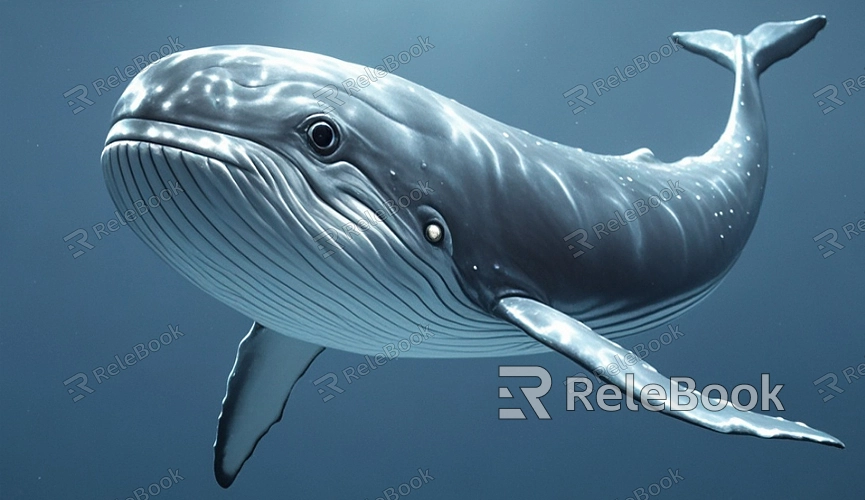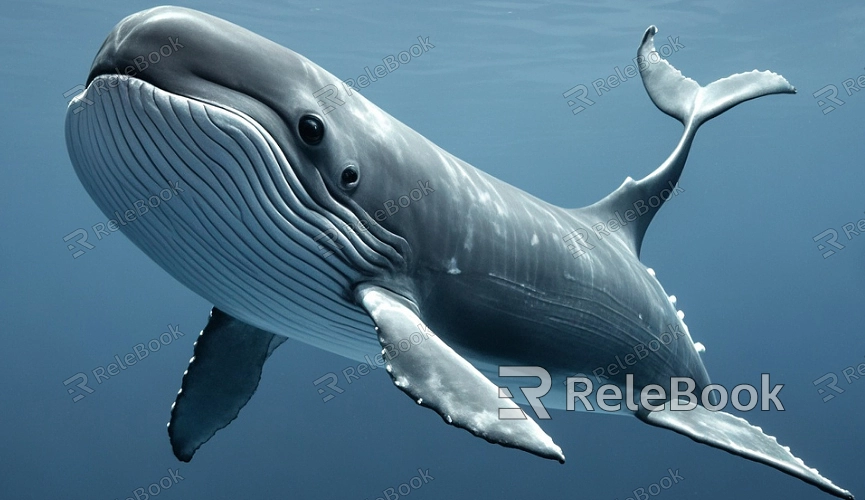How to Create a 3D Whale Model?
Whales, these magnificent marine creatures, are beloved for their graceful form and massive size. Many designers aspire to recreate these beautiful beings in three-dimensional space, whether for games, animations, or other creative projects. This article will guide you through creating a 3D whale model, from basic preparation to final rendering, helping you achieve this creative goal.

Determine the Type and Style of the Model
Before starting, you must clarify the type and style of whale model you want to create. Whales come in various species, such as blue whales, humpback whales, and sperm whales. You can choose one of these or create a unique style, like a cartoonish or realistic look. Understanding the characteristics of your chosen whale species, such as body shape, color, and texture, is essential for your modeling work.
Gather Reference Material
Collecting reference material before modeling is crucial. Look for photos, videos, and related literature about whales to gain a deeper understanding of their biological features and appearance. Utilize search engines and online image libraries to find high-quality whale images. Reference material not only helps you grasp the details but also inspires your creative ideas.

Choose Modeling Software
Selecting the right modeling software is a key step in creating a 3D whale model. Commonly used software includes Blender, Maya, and 3ds Max. Blender is a free and powerful tool suitable for both beginners and professionals. Maya and 3ds Max are industry standards ideal for more complex projects. Choose the tool that best fits your needs and skill level.
Create the Base Shape
After opening your modeling software, start by creating a base shape. Typically, you can begin with a simple ellipsoid, which will serve as the whale's body. Next, use extrusion and stretching tools to adjust the shape, making it more aligned with the type of whale you’ve chosen. Remember to maintain accurate proportions to ensure the final model looks realistic.
Refine the Model
Once the base shape is complete, you need to gradually refine the model. This process includes adding details like fins, tail, and head. Utilize modeling tools to increase the model's intricacies, making it feel more lifelike. Pay attention to the whale's body curves and subtle features, such as the curvature of the fins and the outline of the head.
Add Textures and Materials
After finishing the modeling, the next step is to apply textures and materials to the model. Use UV mapping tools to unwrap the model’s surface, making it easier to paint textures. Choose suitable colors and textures to simulate the smoothness of whale skin. Using texture painting software like Photoshop or Substance Painter can help you create more realistic effects.
Lighting and Rendering
Lighting setup is vital for the final effect. By arranging the lights thoughtfully, you can highlight the details and textures of the whale model. Select appropriate rendering settings to ensure the output is clear and realistic. Experiment with different rendering styles to find the one that best meets your needs.
Animation and Post-Processing (Optional)
If you plan to use your whale model in animations, consider adding animation to it. Utilize rigging techniques to allow the whale model to move fluidly, mimicking swimming motions. After completing the animation, use post-processing software to refine the rendered output and enhance visual effects.
Exporting and Sharing
Once you’ve completed all the steps, you can export the model in common file formats like FBX or OBJ. This way, you can use the model in various projects or share your creative work with others. Make sure to include proper descriptions and usage permissions when sharing, so others can appreciate your work.
Continue Learning and Improving
Creating a 3D whale model is an ongoing learning and improvement process. Whether you are a beginner or an experienced artist, there are always new techniques and knowledge to acquire. Engaging with online communities, sharing your work, and receiving feedback are effective ways to enhance your skills.
In this article, we explored the various steps involved in creating a 3D whale model. From selecting the type of model to the final rendering, you should now have a clear understanding of the entire process. Remember to stay patient and creative throughout your journey, as the final result will reflect your efforts.
FAQ
What software do I need to create a 3D whale model?
You can use Blender, Maya, or 3Ds Max, choosing the tool that best fits your needs.
How can I find reference materials for whales?
You can find whale photos and videos through search engines, online libraries, and related books.
What style should I choose for my whale model?
It depends on your project requirements. You can opt for a realistic style, a cartoon style, or even combine various styles for your creation.
How can I improve my modeling skills?
Engaging with online communities, sharing your work for feedback, and consistently practicing new techniques can help enhance your modeling skills.
Where can I download ready-made 3D whale models?
You can find many high-quality 3D models and textures available for download on the Relebook website.

